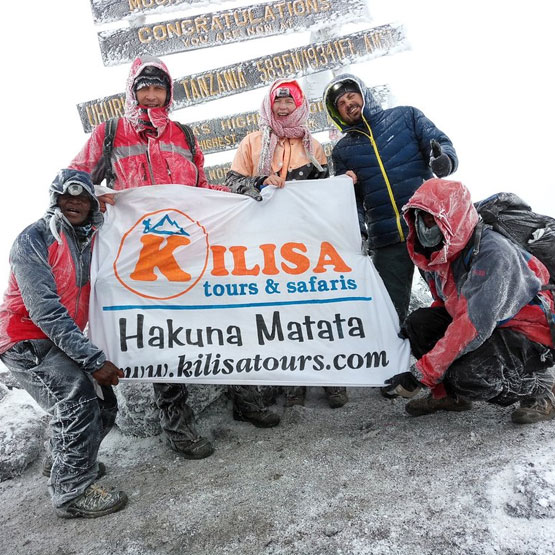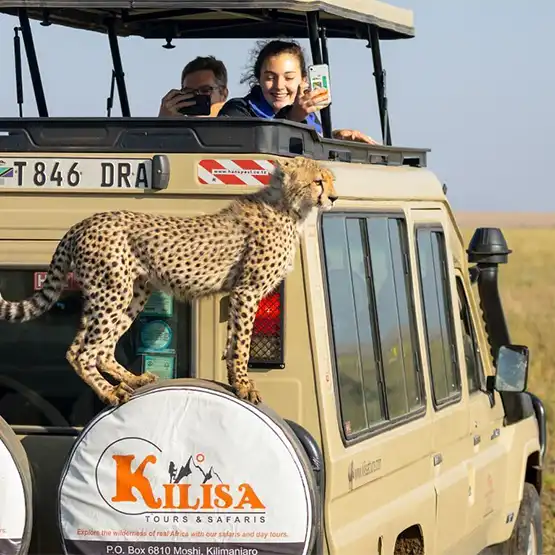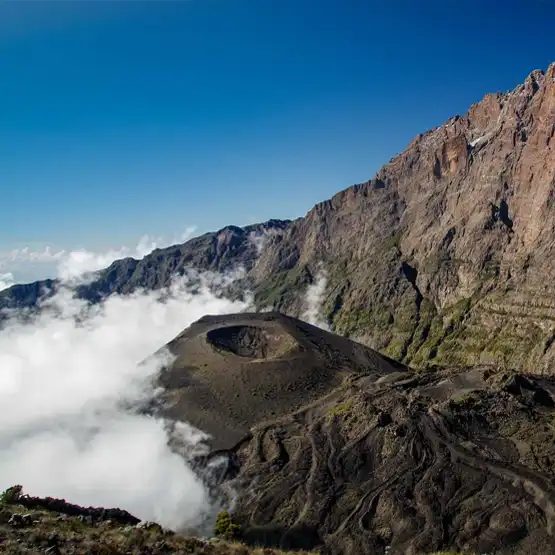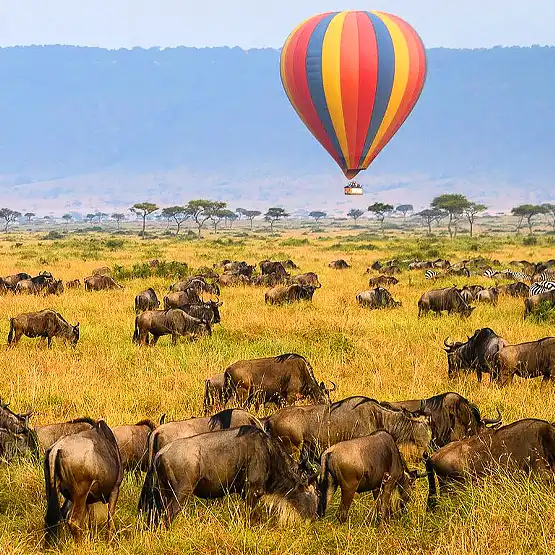Standing at 19,341 feet, Kilimanjaro is not just Africa’s tallest mountain; it’s a dream for many adventurers. Did you know that less than 50% of those who attempt the climb reach the summit? To plan this journey, understanding the intricacies involved is crucial for success.
The first step is choosing the right route among the seven established ones, each with its own set of challenges and scenic rewards. Consider the history of the Marangu route, known as the “Coca-Cola route” for its popularity and relative ease. The statistics show that meticulous planning and proper acclimatization dramatically improve your chances of a successful ascent.
- Choose the best season (January to March, June to October) for favorable weather conditions.
- Select the right route using resources from Kilisa Tours, such as the Marangu or Western Breach routes.
- Prepare for altitude sickness by acclimatizing and consulting your doctor.
- Pack essential gear including layered clothing, sturdy boots, and hydration systems.
- Book your climb through Kilisa Tours’ online system, ensuring you confirm dates and requirements early.

How to Plan and Book Your Kilimanjaro Climbing Adventure
Choosing the best season for your Kilimanjaro adventure is crucial. The most popular times are January to March and June to October, which have milder weather. Each season has its unique beauty, so consider your personal preference when planning. If you enjoy fewer crowds, January to March might be ideal for you. Remember, weather conditions can affect your experience significantly.
Selecting the right route is another essential step. Whether you choose the Western Breach Route or the Marangu Route, each offers unique experiences. For example, according to this post, the Western Breach Route is known for its stunning scenery and fewer climbers. Similarly, the Marangu Route, often called the “Coca-Cola Route,” is popular and provides hut accommodations, as mentioned here. Your choice should reflect your adventure goals and fitness level.
Proper preparation helps avoid altitude sickness, which is a common challenge on Kilimanjaro. Staying hydrated, acclimatizing properly, and taking it slow are key strategies. Ensure you’re in good physical condition before the climb. Regular exercise and long hikes will prepare your body for the challenge. Consulting your doctor is also a wise step before undertaking this adventure.
Packing the right essentials ensures a comfortable and enjoyable climb. Important items include warm clothing, sturdy hiking boots, and a reliable backpack. Don’t forget a high SPF sunscreen and lip balm to protect against sun exposure at high altitudes. A detailed packing list from Kilisa Tours can be very helpful. Having the right gear can make a big difference in your overall experience.
Step #1: Choosing the Best Season for Climbing
Choosing the best season for climbing Kilimanjaro is vital for a successful adventure. The most favorable months are January to March and June to October. During these periods, the weather is generally more stable. April and May are the wettest months, making the trails slippery and challenging. Adventurers often avoid these months due to muddy conditions.
From January to March, the weather is usually warm, and the landscape is lush and green. This period attracts fewer crowds, providing a more serene experience. However, you may encounter some rain and cloudy conditions. On the other hand, June to October offers drier weather and clearer skies. These months are popular among climbers due to the pleasant temperatures and excellent visibility.
Kilisa Tours highlights that climbers should consider their personal preferences and physical condition when selecting a season. For those who prefer a quieter climb, the early months of the year may be ideal. Consider the effects of altitude and how your body responds to different weather conditions. Your comfort and safety should be top priorities. Always check weather forecasts before finalizing your plans.
Finally, some climbers aim for specific dates to coincide with particular events or milestones. Planning ahead can help secure your spot during peak seasons. Keep in mind that booking early with Kilisa Tours can ensure availability during your preferred time. Flexibility is also important in case of unexpected weather changes. Preparing for both the expected and the unexpected can lead to a memorable climb.
Step #2: Selecting the Right Route with Kilisa Tours
Choosing the right route for your Kilimanjaro climb is essential for a rewarding experience. Kilisa Tours offers multiple routes, each with distinct features. The popular Marangu Route is known for its hut accommodations. It’s often referred to as the “Coca-Cola Route” due to its well-trodden paths. This route is suitable for less experienced climbers.
Another exciting option is the Machame Route, also called the “Whiskey Route.” It’s more challenging but offers stunning scenery. This route requires a higher level of fitness. Additionally, it provides a better acclimatization schedule, increasing summit success rates. Many adventurers prefer Machame for the diverse landscapes it offers.
If you’re seeking a less crowded path, consider the Lemosho Route. This route begins in lush rainforest and crosses various ecosystems. The longer approach allows climbers to better acclimatize, enhancing the chances of reaching the summit. It’s ideal for those wanting a quieter, more scenic trek. Kilisa Tours provides excellent guides and support for this route.
Ultimately, the choice of route depends on your experience and goals. Kilisa Tours can help you decide the best fit based on your preferences. Remember, proper preparation is crucial regardless of the route. Researching each option thoroughly ensures you pick the one that aligns with your adventure spirit. Enjoy the journey with the expertise of Kilisa Tours guiding you all the way.
Step #3: Understanding Altitude Sickness and Preparation
Understanding altitude sickness is vital for a successful Kilimanjaro climb. Altitude sickness occurs when you ascend too quickly, and your body can’t adapt to the reduced oxygen. Symptoms include headaches, nausea, and dizziness. It’s important to recognize these signs early. Proper preparation can help prevent severe issues.
One key preparation strategy is acclimatization. This process involves gradually adjusting to higher altitudes over several days. Kilisa Tours often schedules rest days to aid acclimatization. These breaks give your body time to adapt. Slow and steady progress increases your chances of reaching the summit safely.
Staying hydrated is another crucial factor in preventing altitude sickness. Dehydration can worsen symptoms. Aim to drink at least three to four liters of water daily. Kilisa Tours guides often remind climbers to maintain fluid intake. Avoid alcohol and caffeine as they can contribute to dehydration.
Proper nutrition also plays a role in preparation. Ensure you’re eating well-balanced meals rich in carbohydrates. Carbs provide essential energy for climbing. High-calorie snacks like nuts and dried fruits are beneficial. Eating regularly helps maintain energy levels.
In addition to physical preparations, consider mental preparedness. A positive mindset can significantly impact your climb. Prepare for challenges and stay motivated. Visualization techniques and setting small goals can help. Kilisa Tours provides support in these mental strategies.
Consulting your doctor before the climb is advisable. Discuss medications like acetazolamide, which can help prevent altitude sickness. Your doctor can provide personalized advice. Being proactive about your health ensures a safer climb. Kilisa Tours encourages all climbers to take this step seriously.
Step #4: Packing Essentials for the Climb
Packing the right gear is crucial for a successful Kilimanjaro climb. Begin with layering your clothing, which helps regulate your body temperature. On the slopes, temperatures can vary greatly. Start with moisture-wicking base layers to keep sweat away from your skin. Follow with insulating layers like fleece and down jackets.
A sturdy pair of hiking boots is non-negotiable. Make sure your boots are broken in to avoid blisters. When it comes to socks, wool or synthetic materials are best. They offer warmth and effectively wick moisture. Don’t forget gaiters to keep debris and snow out of your boots.
Other essentials include a reliable backpack and sleeping bag. Your backpack should be comfortable and have a capacity of 30-40 liters. Opt for a warm sleeping bag rated for sub-zero temperatures. Additionally, a sleeping mat can add extra comfort and insulation. Kilisa Tours often provides some of these items, so check with them before purchasing.
Personal items are also important to pack. These include toiletries, sunscreen, and a basic first aid kit. High SPF sunscreen is essential to protect your skin from intense UV rays at high altitudes. Lip balm with SPF will prevent chapped lips. Personal medications should also be included.
Gadgets and accessories can enhance your experience. A headlamp with extra batteries is invaluable for early morning or nighttime treks. Trekking poles can provide extra stability on uneven terrain. Finally, pack a water bottle and consider bringing a hydration bladder for easy access to water. Keeping hydrated is key to combating altitude sickness.
Here’s a handy checklist for reference:
- Moisture-wicking base layers
- Insulating layers like fleece and down jackets
- Sturdy hiking boots and wool socks
- Backpack (30-40 liters) and warm sleeping bag
- Toiletries, sunscreen, and personal medications
- Headlamp, trekking poles, and hydration bladder
Proper packing ensures you’re prepared for any eventuality on the mountain.
Step #5: Booking Your Adventure through Kilisa Tours
Booking your Kilimanjaro climbing adventure with Kilisa Tours is a straightforward process. First, visit their website to explore the various routes and packages they offer. You’ll find detailed descriptions and itineraries to help you choose the best option. If you need guidance, their customer service team is readily available to assist. They can answer questions and provide recommendations based on your preferences.
Once you’ve selected your route, it’s time to secure your booking. Kilisa Tours offers an easy online booking system where you can reserve your spot. Ensure you provide all necessary details, such as your preferred dates and any special requirements. After submitting your information, you will receive a confirmation email with all the essential details. This email includes payment instructions and additional information about your trip.
Making early reservations is advisable, especially during peak climbing seasons. Booking in advance ensures you get your preferred dates and route. Kilisa Tours also offers flexible payment options to make the process convenient. Deposits are typically required to secure your reservation, with the balance due closer to your departure date. This approach allows you to plan and budget effectively.
To enhance your experience, consider adding optional services to your booking. These may include airport transfers, extra acclimatization days, or cultural tours. Kilisa Tours can tailor your itinerary to include these extras for a memorable trip. Customize your adventure to fit your needs and interests. Their goal is to provide a seamless and enjoyable experience from start to finish.
Finally, ensure you thoroughly read the terms and conditions before finalizing your booking. Knowing their refund and cancellation policies can save you from unexpected surprises. If you have any concerns, discuss them with the team beforehand. Kilisa Tours prioritizes clear communication and customer satisfaction. Happy planning and get ready for an unforgettable adventure!
Key Challenges and How to Overcome Them
Climbing Kilimanjaro presents several key challenges that require careful planning and preparation. One of the most significant challenges is altitude sickness. Symptoms like headaches, dizziness, and nausea can impede your progress. To overcome this, climbers must acclimatize properly by ascending slowly and taking rest days. Drinking plenty of water also helps reduce symptoms.
The physical demands of the climb cannot be overlooked. The varied terrain requires good physical fitness and endurance. Regular exercise routines focusing on cardio and strength training are essential. Hiking on similar terrains beforehand can better prepare your body for the conditions you’ll face on Kilimanjaro. Training should start at least three months before your trip.
Weather conditions on Kilimanjaro are unpredictable and can be extreme. Climbers may experience intense sun exposure, freezing temperatures, or sudden rain showers. Packing the right clothing layers is crucial for handling these changes comfortably. Quality gear that includes waterproof items will protect against unexpected weather shifts.
Mental stamina plays a vital role in overcoming challenges during the climb. Long treks each day can be mentally exhausting. Setting small milestones along the way can help keep you motivated. Positive thinking and visualization techniques can also boost morale when the going gets tough.
Navigational difficulties may arise due to confusing paths or poor visibility in bad weather. Hiring experienced guides from companies like Kilisa Tours offers solutions to these problems. Their knowledge of the routes ensures you stay on track safely. A reliable guide allows you to focus more on climbing rather than navigation worries.
Lastly, proper nutrition is essential for sustaining energy levels throughout the climb. Eating balanced meals rich in carbohydrates provides necessary fuel for long hikes. Don’t forget high-calorie snacks like nuts and dried fruits to keep energized between meals. Staying well-nourished helps maintain strength and endurance.
What to Expect During Your Ascent
Embarking on your Kilimanjaro ascent involves a mix of excitement and challenges. Each day on the mountain will vary, beginning with a fresh morning start. You will experience different terrain types, from lush rainforests to barren alpine deserts. The scenery changes dramatically, providing breathtaking views. Prepare for a physically demanding yet rewarding journey.
As you ascend, expect to acclimatize at varying altitudes. The initial days will likely involve hiking through lower elevation zones. These are filled with dense vegetation and wildlife. As you go higher, the landscape becomes more rugged and sparse. Each new altitude will test your body’s adjustment capabilities.
The higher you climb, the thinner the air becomes. This can lead to a slower pace as you adjust to reduced oxygen levels. Expect to take more frequent breaks to catch your breath. Your guides will set a manageable pace to ensure everyone stays comfortable. Hydration and nutrition become increasingly important.
The weather can be unpredictable on Kilimanjaro. You might start the day in sunshine and face freezing temperatures by nightfall. It’s essential to wear layered clothing that you can adjust easily. Wind and rain gear will also be necessary. Being prepared for these changes will keep you as comfortable as possible.
Summit night is the most challenging part of the ascent. You’ll start before dawn with headlamps lighting your way. The climb is steep, and the air is cold and thin. But as you reach the summit, the sense of accomplishment is unparalleled. Standing at Uhuru Peak offers a view like no other.
Your descent begins immediately after reaching the summit. Although easier than the ascent, descending requires careful attention to avoid slips. The adventure continues as you return through the diverse ecosystems. Every step down feels equally rewarding and marks the completion of an extraordinary journey.
Navigating the Summit Day Strategies
Navigating Summit Day on Kilimanjaro requires careful planning and mental fortitude. It usually starts around midnight to ensure you reach the summit at sunrise. This timing allows you to avoid the harsh afternoon sun during the ascent. Dress warmly, as the temperatures at night can be freezing. Layering is key to staying warm yet comfortable.
Pacing yourself is critical on this final push to the top. The altitude makes breathing more difficult, so adopting a ‘pole pole’ (slowly, slowly) approach is advised. Your guides will encourage a steady, slow pace. This helps to conserve energy and manage altitude sickness symptoms. Frequent short breaks will be essential.
Nutrition and hydration play a significant role on summit day. Eat a light but energy-packed meal before starting the climb. Keep snacks handy to maintain energy levels throughout the night. Hydration is equally important, so carry enough water. Your guides often bring hot drinks to keep you warm and hydrated.
Positive mental attitude cannot be underestimated. The climb is physically demanding, and staying motivated is crucial. Focus on small milestones to break up the journey. Celebrate each one as you move forward. Remember, reaching the summit is as much a mental challenge as a physical one.
Using trekking poles can provide added stability on the steep and loose scree slopes. They help distribute the effort across your body. This reduces strain on your legs and makes the climb more manageable. Ensure your poles are adjustable for different terrain types.
– **Table elements:**
| Item | Purpose |
|---|---|
| Headlamp | Essential for the pre-dawn climb |
| Thermal Clothing | Keeps you warm in frigid temperatures |
| Trekking Poles | Provides stability on steep slopes |
| Energy Snacks | Maintains energy levels throughout the trek |
| Water Bottle | Necessary for hydration |
The final steps to Uhuru Peak are unforgettable. As you reach the top, take time to soak in the incredible views. The feeling of accomplishment is immense. Capture the moment with photos, but don’t linger too long. The descent follows quickly, making the overall experience a physically grueling yet profoundly rewarding adventure.
Post-Climb Recovery and Reflection
After your Kilimanjaro climb, recovery is crucial to restoring your body. The physical demands of the ascent and descent can leave your muscles sore and fatigued. Adequate rest is essential to heal and regain strength. Hydration also aids recovery by replenishing lost fluids. Remember to eat balanced meals rich in protein and vegetables to support muscle repair.
Reflecting on your achievement can be a gratifying process. Journaling your experiences can help you process the journey. Capture your thoughts, feelings, and memorable moments. Share your story with friends and family. Reflecting on what you’ve accomplished reinforces your success and boosts self-confidence.
Joining post-climb activities can further enhance your recovery. Light physical activities like walking or swimming help maintain flexibility without overexerting your body. Yoga can be particularly beneficial for stretching and relaxation. Connecting with fellow climbers to discuss shared experiences can also provide emotional support. Such interactions can be as healing as physical rest.
Many climbers find they’ve formed strong bonds with their guides and fellow trekkers. Stay in touch with the people you met on the climb. These friendships often last a lifetime due to the shared experience. You can exchange photos and memories to keep the adventure alive. Some may even plan future hiking trips together.
For those looking to give back, consider supporting Kilimanjaro-related conservation efforts. Many organizations work to preserve the unique environment of this iconic mountain. Contributions can help maintain the trails and support local communities. Engaging in such initiatives enhances the positive impact of your adventure.






